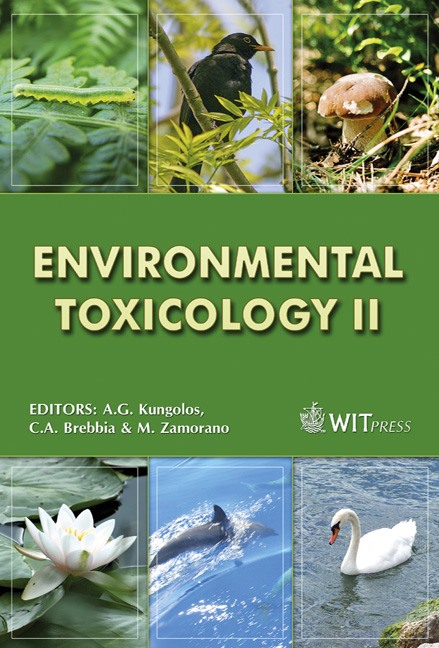In Vitro Toxicity Of Indoor Moulds From Slovak Dwellings
Price
Free (open access)
Transaction
Volume
110
Pages
8
Page Range
227 - 234
Published
2008
Size
335 kb
Paper DOI
10.2495/ETOX080241
Copyright
WIT Press
Author(s)
E. Piecková & Z. Kolláriková
Abstract
In vitro toxicity of complex mixtures of endo- and exometabolites of representative indoor, and related outdoor, fungal isolates from 80 dwellings in Slovakia – mouldy and control ones – has been evaluated by a bioassay with 1-d-old chicks’ tracheal organ cultures. Micromycetes, mostly Aspergillus versicolor (which is able to synthetize a mycotoxin sterigmatocystin), A. flavus (non-aflatoxigenic), other aspergilli, penicillia (potential sources of wide mycotoxins´ spectrum), produced secondary metabolites that ceased ciliary beating in the tracheal epithelium of the organ cultures within 24 hrs of the activity, i.e. in the sense of the method used, they belong to strong toxicants. Nineteen of 55 mould isolates tested so far also produced extrolites without toxic effects detectable by this method. It has been proven that toxin production in fungi depends not only on the species but may vary between every single isolate as well. The most important outcome of the study is that microscopic filamentous fungi present in the dwelling indoor environment under Slovak (Central European) building/housing conditions might produce compounds with a strong potential to damage the upper airways of occupants, mainly children. Keywords: dwellings, indoor moulds, mycotoxins, respiratory toxicity, tracheal organ cultures, ciliary beating. 1 Introduction Currently, a general approach to the study of the mechanism of indoor fungal effects on human beings is becoming more urgent. Such an approach includes the immunosuppressive influence of beta-glucans from fungal cell walls as well as toxic and irritative effects of secondary metabolites – mycotoxins and/or volatile organic compounds (VOCs) [1, 2].
Keywords
dwellings, indoor moulds, mycotoxins, respiratory toxicity, tracheal organ cultures, ciliary beating.





